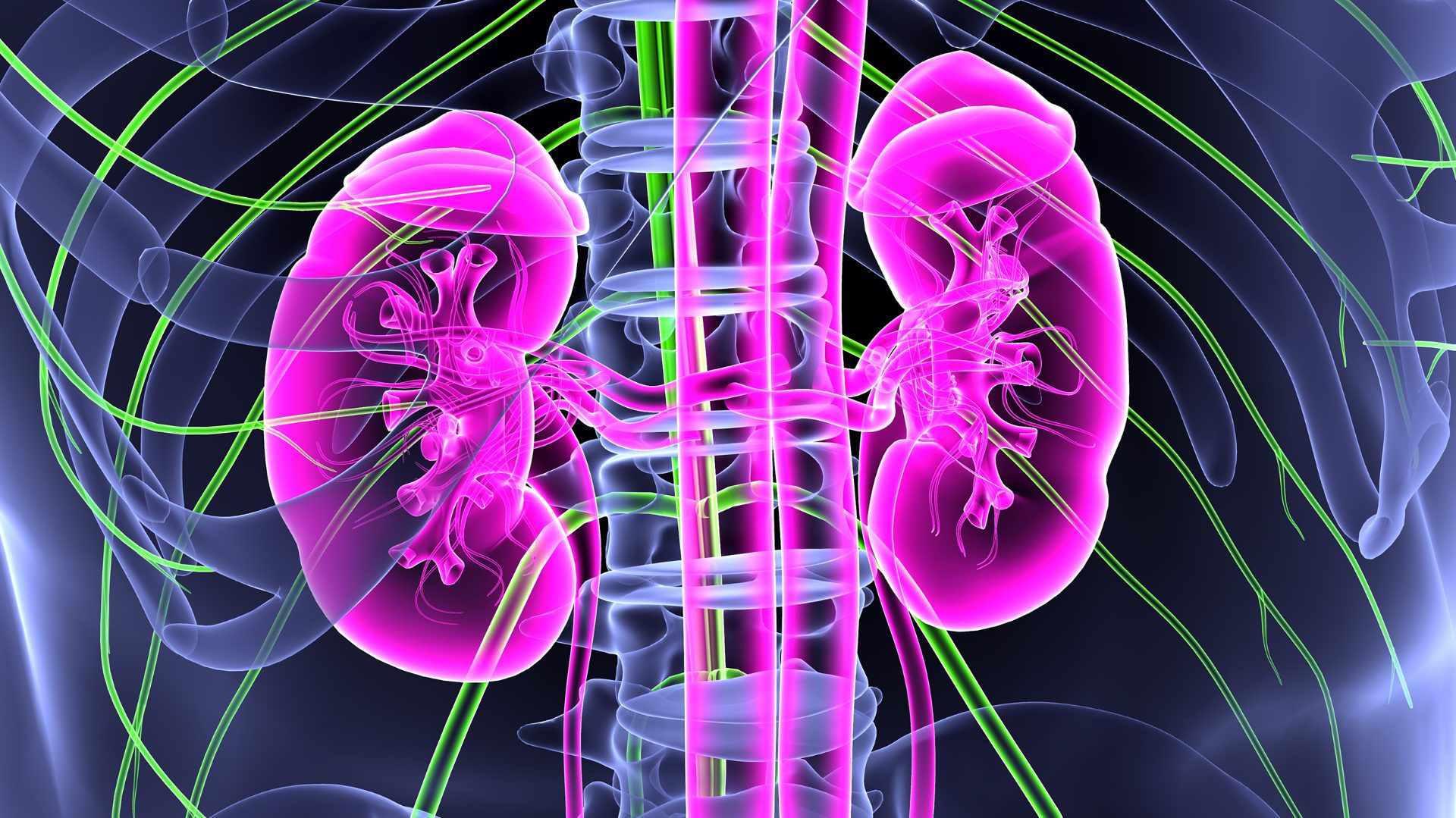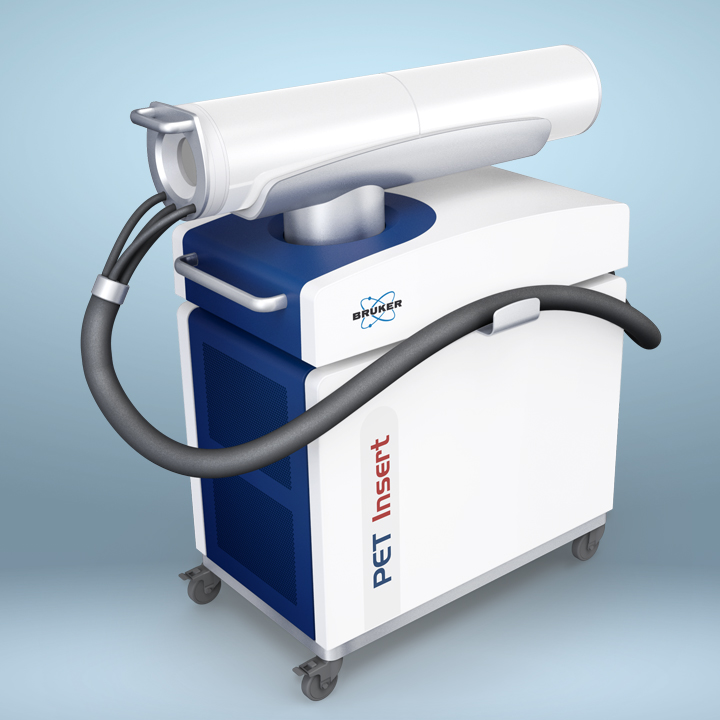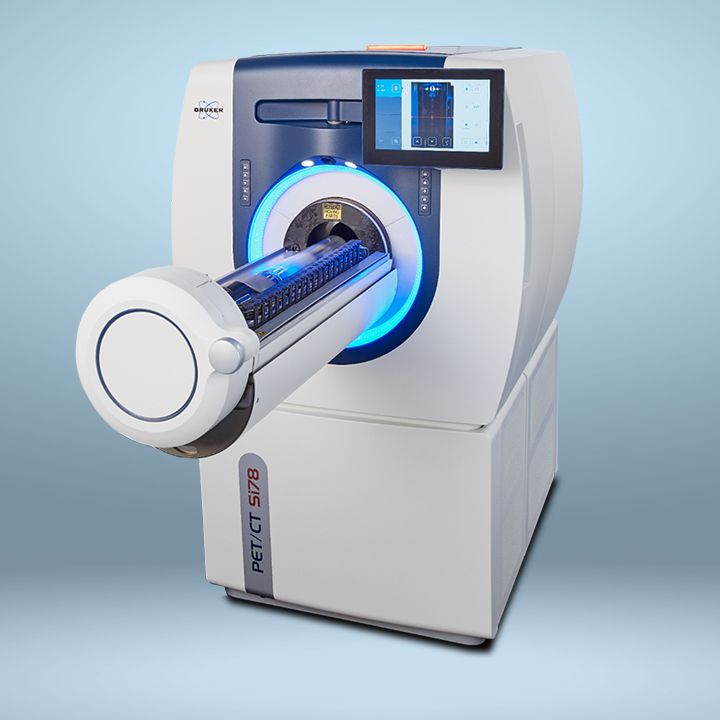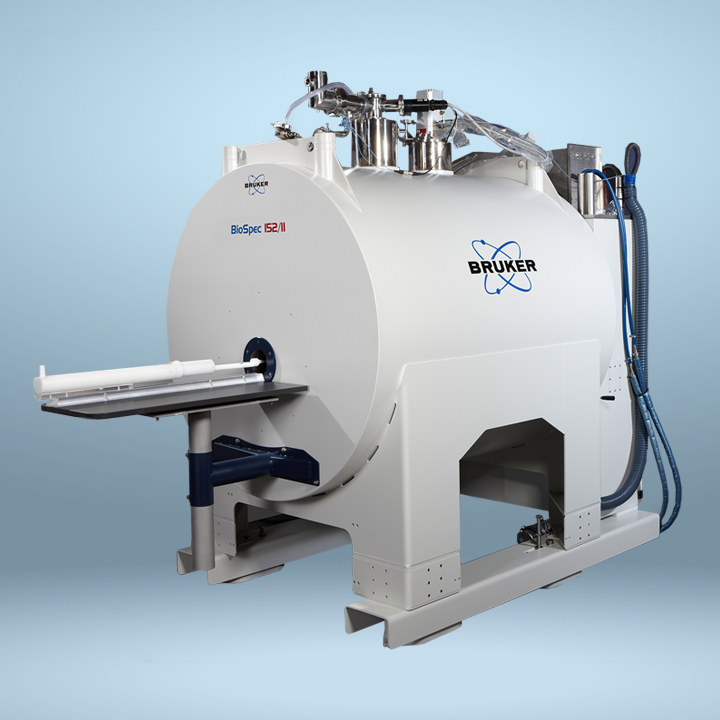

Biodistribution
Understanding the biodistribution profiles of potential drugs and dose prediction in target and non-target organs, enables you to select the most appropriate molecule and dosing paradigm, resulting in considerable cost and time savings prior to committing to FTIH or expensive clinical PET imaging studies. By radiolabeling molecules of interest, it is possible to determine the biodistribution of the molecule over time and to elucidate target interaction; i.e., discover whether the molecule reaches the target of interest or indeed if there is a prevalence of accumulation off target that could indicate safety liabilities.
Bruker provides state-of-the-art nuclear molecular imaging systems such as the Si78 PET inserts, which allow simultaneous or in-line measurements of biodistribution, in conjunction with functional effects of the therapeutic using our BioSpec MRI systems, as well as standalone multimodality PET/CT (Si78) and PET/SPECT/CT (Albira) systems. One of the major advantages of using PET to understand biodistribution and target engagement is its exquisite sensitivity, which enables picomolar concentrations to be measured. In addition, as the technology requires simply changing a single isotope, it does not significantly impact the structure or function of the molecule closely replicating the PK/PD of the parent molecule. This is particularly important for small molecules, but for larger macromolecules such as proteins and antibody constructs it is possible to use SPECT conjugates that can be made locally and could be an important technology to triage macromolecules for biodistribution and pharmacokinetics.
LabScape
Service & Life Cycle Support for Magnetic Resonance and Preclinical Imaging
Bruker’s commitment to provide customers with unparalleled help throughout the buying cycle, from initial inquiry to evaluation, installation, and the lifetime of the instrument is now characterized by the LabScape service concept.
LabScape Maintenance Agreements, On-Site On-Demand and Enhance Your Lab are designed to offer a new approach to maintenance and service for the modern laboratory


